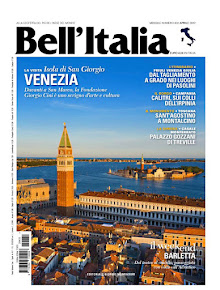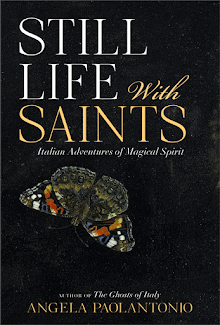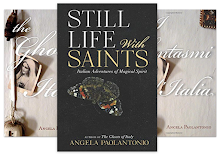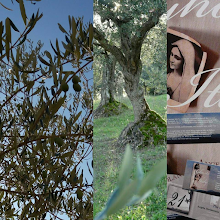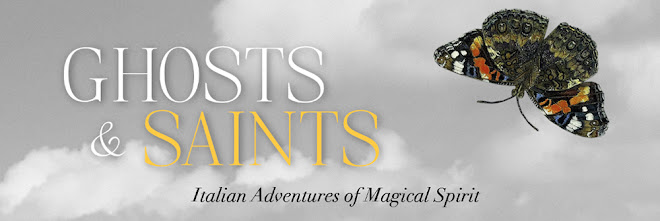 |
| Ursula's Dream |
October 2nd is SS Angeli Custodi, the catch all Saints day for tutti i santi (all 72 of them.) That day recently passed. And would have gone unnoticed but for a couple of dear and angelically attuned Italian friends who called me with their Auguri's & I said thank you. (The angel in Angela apparently counts...)
 |
| Saint Angela |
Saint Angela (Merici), born in 1474, was devoted to the education of young girls. Growing up, I was the only Angela for miles. No one in school shared my name, nor anyone in our treelined neighborhood.
It was lonely out there. But it made me unique. Until I arrived in Italy, specifically Calitri. Here, there are six Angela's on my stretch of via Fontana alone. Guess you could say I was drawn here.
While opinion in St Angela's time held that women were weak and unable to withstand the moral temptations of society without the protection of a husband or the walls of a cloister, (they called them Zitelle for a reason) she knew that women could rely on their own strength and independence to work and live. Way to go, N'gline!
But it gets better. Turns out, in 1535 St Angela chose twelve virgins and started the foundation of the Ursuline School for young women. Their Patron Saint? The martyred medieval maiden Saint Ursula of Brittany. Hunh.
 |
| ‘Ursula et XI.M.V’ |
 |
| The Ambassadors |
So, while in Venice again recently, I made a beeline to the Gallerie delle’Accademia. I went specifically to view the Saint Ursula Cycle in Room XXI (painted by Carpaccio in 1495 for the Venetian Scuola di Sant' Orsola) where they have lived since Ruskin's time, to do a little Art History sleuthing and maybe connect these underlying dots.
In the paintings she is clearly a babe. The daughter of a Christian King, by the time she was fifteen her beauty and wisdom had become known abroad. A heathen King wanted her as wife to his son, whom she would marry only if he converted. She consults her father. He consents, as does her betrothed and she plans their pilgrimage. An angel soon appears to her in a dream announcing her journey to martyrdom.
 |
| 'DIVA F.AV/ST.A' |
Princess Ursula, martyred by invading Huns (run through the heart by an Archer) along with her 11 or 11,000 virgins (you pick, as legend here seems confused) while the smitten son of the King of the Huns, the Pagan Prince, looked on is a sort of Renaissance Urban Legend.
Nonetheless, Carpaccio devoted plenty of canvas space to tell Ursula’s tragic, romantic story endowed with plenty of symbolic significance and pictorial clues to ponder over as religious and art historians are wont to do and have done so ever since.
 |
| Secret messages |
But was her story real? Or only the first Renaissance Bond Girl, like 007s sexy secret-agent, actress Ursula Andress. Was Andress named after the Saint?
Where is Joe Campbell when you need him ...
'Royal power over herself, and happiness in her flowers, her books, her sleeping and waking, her prayers, her dreams, her heaven, her earth...' John Ruskin: On Carpaccio's Dream of Saint Ursula, Kent, 1872

